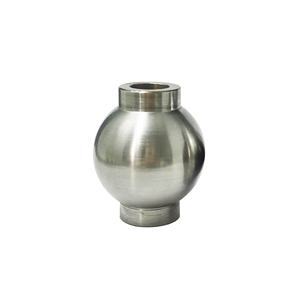**The Magic Box: What Can You Actually Print With a 3D Printer?**
(What Materials Can Be Used In 3d Printing)
Imagine a machine that turns spaghetti into a bicycle helmet. Or maybe a gadget that crafts jewelry from melted sand. This isn’t science fiction—it’s 3D printing. The real magic lies in the materials. Let’s dive into the wild stuff you can feed into these machines to make almost anything.
Start with plastics. These are the bread and butter of 3D printing. PLA plastic is like the friendly neighbor of materials. It’s made from cornstarch or sugarcane, smells faintly like pancakes when melted, and prints everything from toy dinosaurs to phone cases. ABS plastic is tougher. It’s the stuff Lego bricks are made of, perfect for car parts or drill handles. Then there’s PETG, a middle ground—waterproof, flexible enough for shampoo bottles, and tough enough for outdoor gear.
But why stop at plastic? Metals step in when you need something stronger. Stainless steel can be printed into wrenches or art sculptures. Titanium? That’s for aerospace parts or medical implants. Aluminum works for lightweight frames like bike parts or custom camera gear. These metals aren’t just melted down—they’re often used as powders, fused layer by layer with lasers.
Ever wanted to print a squishy phone case or a bouncy shoe sole? Flexible materials like TPU or TPE make it possible. These rubber-like plastics bend without breaking. Print a custom grip for your tools, a waterproof watchband, or even a pair of sandals. They’re stretchy, durable, and come in colors from neon green to see-through clear.
Ceramics might sound fragile, but 3D printers handle them just fine. Clay gets shaped into vases, bowls, or intricate sculptures before being fired in a kiln. Porcelain can become delicate jewelry or even dental crowns. The cool part? You can print designs too complex for traditional pottery wheels—think lace-like patterns or mugs shaped like dragons.
Now for the weird stuff. Some printers work with wood. Sort of. Wood-infused filaments mix recycled wood dust with plastic, creating a material that looks and smells like cedar or mahogany. Sandstone powder mixed with glue makes pieces that feel like rough stone—great for architectural models or ancient-looking chess sets. There’s even “metal” filament with iron or copper particles. Polish it, and your 3D-printed wrench might actually rust.
Food printers exist too. Chocolate is a favorite—melted and piped into heart-shaped truffles or custom wedding cake toppers. Sugar paste becomes edible lace for desserts. Some experimental printers squeeze out pizza dough or pureed veggies, layer by layer. It’s not MasterChef quality yet, but imagine printing a birthday cake shaped like a rocket.
Medical 3D printing uses materials you’d find in a sci-fi lab. Biocompatible resins create dental aligners or hearing aids tailored to your ears. Titanium jawbones or hip implants? Printed to fit perfectly. Researchers even print with “bioinks” made of living cells, building skin grafts or tiny organs for drug testing.
The future? Think bigger. Concrete printers build houses layer by layer. Recycled ocean plastic gets turned into furniture. Scientists experiment with printing graphene for super-strong materials or mixing glow-in-the-dark powders for neon bike helmets. Some try printing with moon dust—because why not prepare for lunar condos?
(What Materials Can Be Used In 3d Printing)
Everyday creators already use these materials. A teacher prints dinosaur fossils for class. A chef makes custom chocolate molds. A mechanic prints a rare car part instead of waiting months for shipping. The limits aren’t about the machine—they’re about the materials we dream up. So next time you see a 3D printer, remember: it’s not just a tool. It’s a magic box waiting for your next wild idea.
Inquiry us
if you want to want to know more, please feel free to contact us. (nanotrun@yahoo.com)

